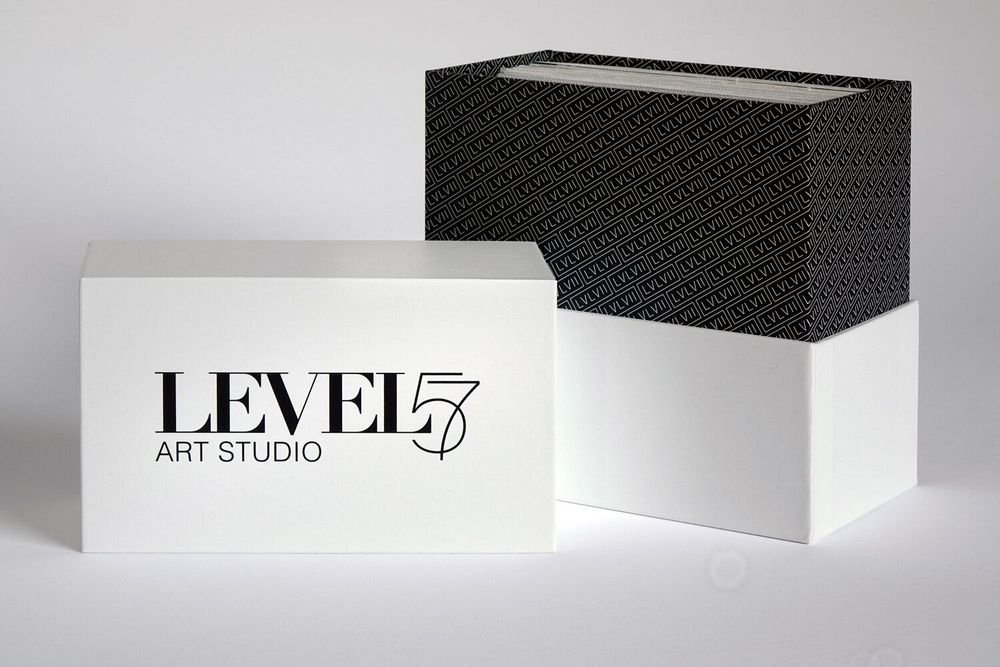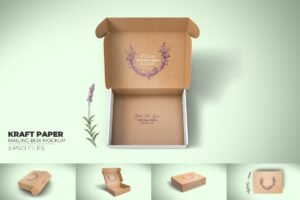In the plethora of options, subscription boxes help curate products according to the customer’s personal preferences which in return forms a positive retailer-customer relationship.
Before starting on your subscription box, you need to have a solid understanding of what your brand will represent and what kind of products to include. Your brand should deliver a positive message that will educate and show your customers what the purpose is. Setting high standards for your box will allow you to launch orders. Research what your competitors are aiming for and try to market your box to stick out better.

Importance of Packaging in the Subscription Model
Packaging is not just a container; it’s a key differentiator. A well-designed package can turn an ordinary delivery into a memorable event. It sets the tone for the entire subscription, influencing the subscriber’s perception of value, quality, and the brand itself.
Understanding the Goals of Subscription Box Packaging
Creating a Memorable Unboxing Experience
The unboxing moment is a critical touchpoint. It should evoke excitement and delight. Thoughtful details like tissue paper, stickers, or personalized notes can enhance this experience. The goal is to make the subscriber feel special and eager to explore the contents.
Branding and Consistency
Consistent branding across the packaging reinforces brand recognition. From the logo to the color palette and font choices, every element should align with the brand’s identity. This helps build trust and loyalty as subscribers associate the packaging with a familiar and reliable brand.
Protecting the Contents
Ensuring the safety of the products inside is paramount. The packaging must withstand handling and transportation without causing damage. This protects the quality and integrity of the items, ensuring subscribers receive them in perfect condition.
Design Elements for Subscription Boxes
Color Schemes and Their Impact
Colors have the power to evoke emotions and set the mood. Bright and bold colors can convey energy and excitement, while softer tones might suggest elegance and sophistication. The choice of color should complement the brand and the type of subscription.
Graphics and Illustrations
Compelling graphics and illustrations can tell a story or create a theme. They can be used to showcase the products, hint at the contents, or simply add visual appeal. Custom illustrations can make the packaging stand out and create a unique brand aesthetic.
Typography and Messaging
Clear and legible typography is essential for communicating important information such as the brand name, subscription details, and instructions. The messaging should be concise, engaging, and consistent with the brand’s tone of voice.
Materials and Sustainability
Choosing the Right Materials
The selection of materials depends on various factors such as the nature of the products, the budget, and the brand’s sustainability goals. Cardboard, plastic, and fabric are common options, each with its own pros and cons.
Eco-Friendly Options and Their Benefits
In an era of increasing environmental consciousness, eco-friendly materials like recycled cardboard or biodegradable plastics are gaining popularity. They not only appeal to environmentally-aware subscribers but also contribute to a positive brand image.
Balancing Cost and Sustainability
While sustainability is important, it’s crucial to find a balance that doesn’t compromise the budget. Exploring cost-effective sustainable options and optimizing packaging design can help strike the right balance.
Functionality and Practicality
Ease of Opening and Closing
The packaging should be easy to open without causing frustration. Tabs, perforations, or easy-to-tear seals can enhance the user experience. Similarly, it should be resealable for those who want to store the items or keep the packaging for future use.
Organization of Items Within the Box
A well-organized interior keeps the items neatly arranged and protected. Dividers, compartments, or foam inserts can prevent items from shifting during transit and make the unboxing process more orderly.
Reusability and Secondary Uses
Adding value by making the packaging reusable or having a secondary purpose, such as a storage container or decorative item, can leave a lasting impression and increase the perceived value of the subscription.
Personalization and Customization
Tailoring to Individual Subscribers
Personalized touches like including the subscriber’s name or customizing the contents based on their preferences can create a highly individualized experience. This level of personalization builds a stronger connection and makes the subscriber feel truly valued.

Special Occasions and Themed Packaging
For holidays, birthdays, or other special events, themed packaging can add an extra layer of excitement. It shows that the brand is attuned to the subscriber’s life moments and adds a festive touch.
Incorporating Subscriber Data
Using data such as purchase history or subscriber feedback to customize the packaging and contents can enhance relevance and satisfaction.
Brand Storytelling through Packaging
Communicating the Brand Values
The packaging is an opportunity to communicate the brand’s values and mission. Whether it’s a commitment to quality, ethical sourcing, or community support, sharing these values can resonate with subscribers who align with the same principles.
Telling the Origin or Inspiration behind the Subscription
Sharing the story of how the subscription box concept came to be or the inspiration behind the curation adds depth and authenticity. It makes the brand more relatable and builds an emotional connection.
Creating a Connection with the Subscriber
By weaving a narrative through the packaging, the brand can forge a deeper bond with the subscriber, turning them from a mere customer into a loyal advocate.
Packaging for Different Types of Subscriptions (e.g. beauty, food, lifestyle)
Specific Requirements and Considerations
Each subscription category has its unique packaging needs. For example, beauty subscription boxes might require more padding and protection for fragile items, while food boxes need to focus on insulation and food safety.
Examples of Successful Packaging in Each Category
Looking at real-life examples of well-executed packaging in different categories can provide inspiration and insights into best practices.
Cost Considerations and Budgeting
Factors Influencing Packaging Costs
Material costs, printing techniques, design complexity, and order quantities are some of the factors that impact the overall cost of subscription box packaging.
Strategies for Optimizing Expenses
Sourcing materials in bulk, working with efficient suppliers, and streamlining the design process can help control costs without sacrificing quality.
Return on Investment from Effective Packaging
Effective packaging can lead to increased subscriber retention, positive word-of-mouth, and higher brand perception, ultimately resulting in a significant return on investment.
Testing and Feedback
Conducting Packaging Tests
Before launching a new packaging design, conducting tests to assess its durability, functionality, and visual appeal is essential. This helps identify potential issues and make necessary improvements.
Gathering Subscriber Feedback
Listening to subscriber feedback is invaluable. It provides insights into what works and what doesn’t, allowing for continuous refinement and optimization of the packaging.
Making Improvements Based on Responses
Actively using feedback to make changes demonstrates a commitment to providing the best possible experience and shows that the brand values the subscribers’ opinions.
Conclusion
Subscription box packaging is a powerful tool that can make or break the subscriber experience. By understanding the goals, incorporating design elements, considering functionality and sustainability, personalizing, and telling a brand story, companies can create packaging that not only protects the contents but also delights and engages subscribers. Keeping up with the latest trends and continuously evolving to meet the changing expectations of consumers is key to staying ahead in the competitive subscription box market. With the right packaging strategy, a subscription box can become a source of joy and anticipation for subscribers, driving the success of the business.






